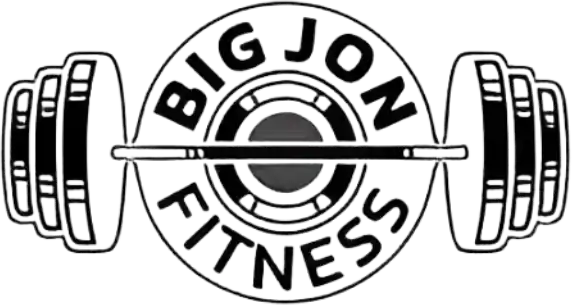Is testosterone replacement therapy appropriate for women? A controversial topic medically, the FDA currently only approves testosterone therapy in women for the treatment of hypoactive sexual desire disorder in postmenopausal women (Nerattini et al., 2025) – must only be men working in the FDA, right? While the effects of testosterone therapy in women regarding fatigue, stress and anxiety, depression, mood, weight, and cognitive decline as a few observed potential low testosterone red flags that are not based on low libido is debated amongst medical providers, it is apparent in research that low testosterone is a precursor for both men and women in relation to osteoarthritis (Cassalia et al., 2025); in combination with low estrogen effects on osteoporosis (Hsu et al., 2024); reducing fall rate in both aging men and women (Bischoff-Ferrari et al., 2008). In accordance to studies that have referenced both genders as being positively impacted by increasing testosterone levels, wouldn’t it make sense that there were more reasons to approve testosterone therapy in women, like men, especially regarding cognitive decline, muscle strength, and bone health?
An unbalanced system
Is it true that women don’t get the same treatment as men when it comes to hormones, especially testosterone? Dr. Kelly Casperson explains this imbalance in hormone treatment between genders as medical patriarchy in her book “You Are Not Broken.” As explained by Casperson, a patriarchal society is defined as “a social system in which men hold primary power and are the dominant force in leadership, moral authority, and social privilege.” Until recently, my own unawareness prevented me from understanding this concept when I realized how the medical system prioritizes me as a male in a medical patriarchal system. I have been on testosterone replacement therapy since 2012. Over the years, my doctor eventually asked me as I approached my later 30s, “Do you want a prescription for Cialis?” It wasn’t until recently, as I looked at my online medical records at 41, that I noticed a diagnosis of pulmonary hypertension, which I have never discussed with my doctor. At this moment, I realized, wow, medical patriarchy is a real phenomenon. I have heard many stories from my own female clients over the years explaining the difficulties to simply order a hormone panel, let alone a prescription, if hormones were at the lower end of normal versus in optimal ranges. Yet for myself, I get a bogus diagnosis to get a prescription for something that is more about ensuring that my male needs are taken care of as a preventive measure. I do agree that in 2025, we are well past the timeframe of needing to have equal research and treatment protocols for men and women in hormone treatment (really in anything).
A common complaint that I hear from female clients is that their doctor won’t listen to them when it comes to their hormones, especially testosterone. Recently, a 50-year-old client was told by her doctor (male doctor) that she needed to be on progesterone and estrogen because of her age without ordering hormone labs to justify his claim. In the same conversation, this medical provider also informed this client that testosterone treatment was not necessary for women. Unfortunately, this provider has probably treated thousands of women without regard for current research. In her book, Dr. Casperson reflected on a prior medical school professor’s statement, saying, “Fifty percent of what I tell you is going to be wrong, and we don’t know what fifty percent that will be.” This statement really speaks volumes, especially for women expecting the most up-to-date medical protocols from their provider, yet many still get told that testosterone is insignificant to their health and well-being, which is part of the “wrong” fifty percent. It is important to understand that not all medical providers are correct in their assessment or lack of assessments when it comes to hormones. It is critical that you align yourself with a progressive medical provider who studies current research and is willing to run hormone labs and, more importantly, listen to you. To quote Dr. Mary Claire Haver in her book “The New Menopause,” if your doctor doesn’t do this, then find a new doctor. I have several clients who are also medical providers who work with women’s hormones; therefore, I can assure you that there are providers out there who are up-to-date in their exploration of research and protocols for treating women’s hormones.
This website can be used to find a NAMS-certified medical provider who will be up to date with treating your hormones.
The Menopause Society | Homepage
Two reasons to look at testosterone replacement therapy in women
First, I do want to make it clear that treating testosterone in women is not the end all be all. Unlike men’s hormones, where testosterone is significantly higher compared to estrogen and progesterone (yes, men have the same hormones as women, just in different amounts), women’s hormones are not as simple to analyze. Estrogen plays a significant role in the treatment of many symptoms that are also being looked at in relation to low testosterone. Finding the right balance between estrogen, testosterone, and progesterone is essential for each woman, and unfortunately, what is balanced for one woman may not be balanced for another. While I am going to reference some low testosterone reg flags and possible benefits to adding in testosterone therapy, it is not a guarantee that testosterone is the sole issue, which makes it more important to find and work with a medical provider who is up to date in the field of hormones and willing to listen to you as an individual versus giving you a generalized plan for all.
While low sexual desire is an FDA-approved reason for the use of testosterone therapy in women, other valid reasons for using testosterone exist, such as joint and bone health as well as cognitive decline.
Osteoarthritis and Osteoporosis
Osteoarthritis is one the most prevalent degenerative joint diseases across the world, affecting older adults, and it has been shown that low testosterone in women is a risk factor that can be prevented by using testosterone replacement therapy (Ma & Gao, 2025). Osteoarthritis is different than osteoporosis. Think more about joints versus bone density. Osteoporosis is affected by both low estrogen and declining androgens in women, in which increasing estrogen is an important component of prevention (Ma & Gao, 2025). In an observational study analyzing nearly 40,000 postmenopausal women not using hormone therapy without a prior hip fracture, it was shown over seven years that those who had higher levels of endogenous bioavailable testosterone (maintained higher levels of their own testosterone) were associated with lower risk of hip fractures independently from other hormones and risk factors (Lee et al., 2008). This study also showed that high concentrations of sex hormone binding globulin (SHBG) are a risk factor independent of circulating estradiol and testosterone levels (Lee et al., 2008), which is because the higher your SHBG is, the less testosterone and estrogen are available for your body actually to use. Again, estrogen is important to maintaining bone density; however, testosterone therapy could also help maintain muscle mass by maintaining or increasing muscle strength, which then, combined with proper estrogen levels, would, in theory, help women maintain bone density as well as potentially avoid arthritis in the joints as they age post-menopause. Why is this important? In Dr. Peter Attia’s book “Outlive,” he explains that after the age of 65, about 30% of both men and women will die within a year after a hip fracture. This statistic looks at both men and women, and since testosterone therapy is given to men to help them maintain muscle strength to prevent falls leading to an injury such as a hip fracture, why wouldn’t a similar approach be used for women who also hold the same mortality risk following a hip fracture?
Cognitive Decline
Testosterone replacement therapy is also showing potential benefits in postmenopausal women in relation to cognitive decline. Research is now showing that maintaining testosterone levels throughout the lifespan could be beneficial in reducing the risks of Alzheimer’s disease (Nerattini et al., 2025). The main findings of this study were that higher testosterone levels were linked to increased cerebral blood flow in women, which is important because reductions in cerebral blood flow are an early biomarker for Alzheimer’s disease. Also, higher testosterone levels during premenopausal and perimenopausal women were found to be associated with larger gray matter volume in the brain, which is linked to cognitive function, and a reduction in this area is also shown to be a risk factor for Alzheimer’s disease (Nerattini et al., 2025). Atrophy in the hippocampus, which is associated with memory formation and learning, is also shown to be a risk factor for developing Alzheimer’s disease. In a study at 15,640 male and female participants, a positive association was shown between lower levels of testosterone and hippocampus atrophy, suggesting that higher testosterone levels in women may contribute to maintaining cognitive health as they age (Lian et al., 2025). Again, testosterone is not the only factor in cognitive decline, as estrogen is also a major factor, but testosterone does appear to have a significant influence.
It is thought that the disruption in hormonal signaling and sharp decline in estradiol at menopause is a risk factor for developing Alzheimer’s disease post-menopause, which leads to the theory that hormone therapy beginning during the perimenopause could be a preventative measure for women to prevent the onset of cognitive decline as women have a greater chance of developing Alzheimer’s disease compared to men by a ratio of 2:1 as explained by Dr. Attia. Dr. Haver is also in agreement that the crash of estrogen, referred to as estradiol on lab work, at menopause suggests hormone treatment should start at the onset of symptoms, as early as perimenopause, which can have a more significant impact on preventing symptoms of cognitive decline versus improving symptoms later on once they have already presented themselves. She is referring to the timing hypothesis, which recommends that starting hormone therapy as soon as possible once starting menopause is best. For women who do not want to use estrogen in their hormone therapy, Nerattini et al. (2025) findings indicate that testosterone is potentially shown to be protective in maintaining cerebral blood flow in postmenopausal women as women not using estrogen therapy showed stronger positive associations between testosterone and blood brain flow. These results showed that testosterone therapy may provide neuroprotective benefits independent of estrogen therapy.
What is the optimal range for women’s testosterone?
Dr. Casperson explains that testosterone therapy enhances both cognitive performance and improves musculoskeletal health in post-menopausal women. What are the normal ranges for women? Dr. Casperson uses a range of 15-70 ng/dl. Those familiar with medical reference ranges for lab work will know that many ranges are around 8-10 ng/dl or even lower to around 45-55 ng/dl. The peak range of 70 ng/dl, suggested by Dr. Casperson, shows that women’s testosterone is of significant importance in their overall well-being and cognitive and physical performance.
Everyone should get yearly hormone panels
Everyone, whether male or female, should get their hormones evaluated. I recommend that my clients begin getting their hormones tested at age 30 and do this yearly, even if their hormones are in an optimal range. I recommend this because it is important to see trends over time. Therefore, if you are a 30-year-old female who has a testosterone level of 48 and you consistently see yearly ranges between 45-50 and all of a sudden see a 20-point drop, then that drop is something to potentially look at and be conscious of versus not having a prior history of a personal reference range to compare. When looking at medical reference ranges, especially for women, if you do not have prior data, then it will be increasingly difficult for a medical provider to justify optimal ranges vs falling into the low-normal reference range and being told that you are in the “normal” reference range. If you are over 40 and have never had your hormone labs tested, now is the time to start and be pushy if you get resistance. It is your body, and you have the right to know your hormone levels, regardless of whether your medical provider thinks so or not. Hopefully, as time progresses, there will be continued progress in the acceptance and encouragement to test women’s testosterone (for that, all hormones) and prescribe testosterone in appropriate situations.
BOOKS REFERENCED
The New Menopause: Navigating Your Path Through Hormonal Change with Purpose, Power, and Facts by Mary Claire Haver MD
You Are Not Broken: Stop “Should-ing” All Over Your Sex Life by Dr. Kelly Casperson
Outlive: The Science and Art of Longevity by Peter Attia MD
ARTICLES REFERENCED
Bischoff-Ferrari, H. A., Can, U. E. N. A. L., Staehelin, H. B., Platz, A. N. D. R. E. A. S., Henschkowski, J., Michel, B. A., … & Theiler, R. (2008). Severe vitamin D deficiency in Swiss hip fracture patients. Bone, 42(3), 597-602.
Cassalia, F., Lunardon, A., Frattin, G., Danese, A., Caroppo, F., & Fortina, A. B. (2025). How Hormonal Balance Changes Lives in Women with Psoriasis. Journal of Clinical Medicine, 14(2), 582.
Lee JS, LaCroix AZ, Wu L, et al. Associations of Serum Sex Hormone-Binding Globulin and Sex Hormone Concentrations with Hip Fracture Risk in Postmenopausal Women. J Clin Endocrinol Metab. 2008;93(5):1796-1803
Lian, X., Bai, Y., Du, P., Jing, Z., Gao, J., Liu, F., Hu, J., & Xi, Y. (2025). Causal influences of testosterone on brain structure change rate: A sex-stratified Mendelian randomization study. Journal of Steroid Biochemistry and Molecular Biology, 245, 106629.
Ma, N., & Gao, F. (2025). Correlation between low testosterone levels and the risk of osteoarthritis: a cross-sectional analysis of NHANES data (2011–2016). BMC Musculoskeletal Disorders, 26(1), 23.
Nerattini, M., Williams, S., Andy, C., Carlton, C., Zarate, C., Boneu, C., … & Mosconi, L. (2025). Sex-specific associations of serum testosterone with gray matter volume and cerebral blood flow in midlife individuals at risk for Alzheimer’s disease. PloS one, 20(1), e0317303.












